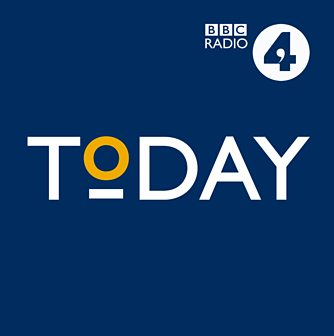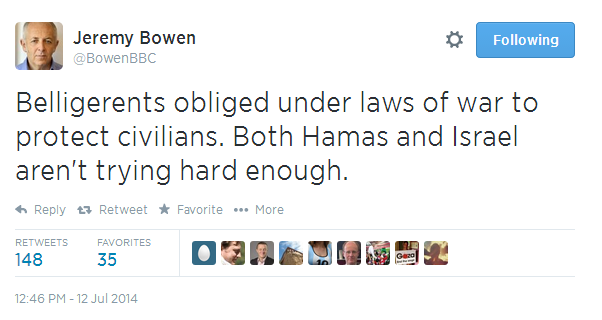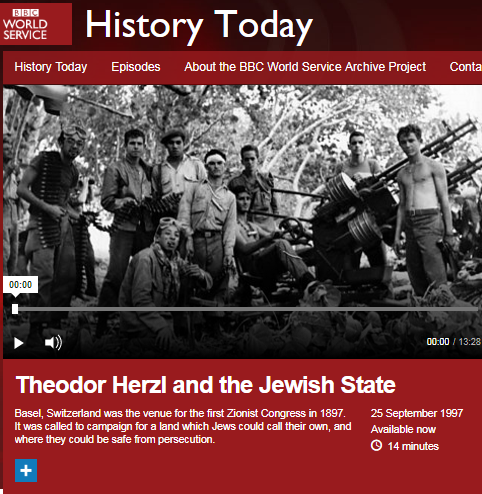A significant proportion of the January 18th edition of BBC Radio 4’s ‘Today’ programme was given over to what appears to have become one of its presenters’ pet topic – the Gaza Strip.
The previous evening viewers of ‘News at Ten’ had seen Mishal Husain’s one-sided report on the healthcare system in Gaza – filmed a month earlier when she visited the territory – and the next morning Radio 4 listeners heard her present a total of over sixteen and a half minutes of similar content in two separate items.
Those two items will be discussed in upcoming posts but first let’s take a look at statements made by Mishal Husain near the beginning of both those items – from 37:13 and 2:09:59 here.
37: 13 Husain: “The UN says that last year 295 Palestinians were killed and 29,000 injured by Israeli forces in the West Bank and Gaza – the highest annual figure since 2014. Fifteen Israelis were killed in Palestinian attacks in the same period.”
2:09:59 Husain: “2018 was the worst year for Palestinian deaths and injuries in the West Bank and Gaza since the Gaza conflict of 2014. The United Nations says 295 Palestinians were killed and 29,000 injured by Israeli forces over the course of the year. In the same period, says the UN, 15 Israelis were killed in Palestinian attacks and 137 injured. On the Palestinian side most of the deaths and injuries were connected to the weekly protests at the boundary fence that separates Gaza from Israel.”
First let’s examine the source of that information. Although Husain uses the terms “UN” and “United Nations”, the data specifically comes from a press release put out by the local branch of the United Nations Office for the Coordination of Humanitarian Affairs (OCHA) which, as regular readers know, is a highly politicised and partisan organisation that has in the past used highly dubious methodology to produce reports on casualties in the Gaza Strip.
That UNOCHA press release states that 23,000 (79%) of the 29,000 people described by Mishal Husain as “injured by Israeli forces” sustained their injuries “in the context of Gaza’s ‘Great March of Return’ demonstrations by the fence”. As we see on UNOCHA’s own data base its definition of injured means:
“…people who were physically hurt in a relevant incident and received medical treatment at a clinic or hospital, or by paramedic personnel on the site of the incident. This includes people who received treatment due to suffocation [sic] by tear gas.”
And indeed, according to the break-down titled “Injuries by type of weapon” appearing on that data base, the most frequent cause of those injuries is defined as “Tear Gas (inhalation)”.
Another point arising from that data – but airbrushed away from audience view by Husain – is UNOCHA’s admittance that some of the casualties were terrorists.
“At least 28 of the Palestinians killed by Israeli forces in 2018 were members of armed groups in Gaza…”
The figure cited by UNOCHA is considerably lower than that claimed by Hamas. As was noted here in May 2018:
“On the day of the violent events that prompted so much BBC coverage – May 14th – the Palestinian Islamic Jihad announced that three of those killed belonged to its terror organisation. The following afternoon – May 15th – Hamas put out a ‘martyrdom poster’ for ten members of its internal security apparatus also killed in the May 14th incidents.
On the afternoon of May 16th reports emerged concerning an interview given by Hamas’ Salah Bardawil to a local TV channel.
“A Hamas official on Wednesday acknowledged that 50 of the 62 Palestinians reported killed during Gaza border riots on Monday and Tuesday were members of the Islamist terrorist group, bringing the total number of known members of terror groups among the fatalities up to 53.
“In the last rounds of confrontations, if 62 people were martyred, Fifty of the martyrs were Hamas and 12 from the people. How can Hamas reap the fruits if it pays such an expensive price?” said Hamas official Salah Bardawil in an interview with the Palestinian Baladna news outlet.
Questioned about the figures by the presenter, Bardawil said they were “official.”
“I am giving you an official figure. 50 of the martyrs in the recent battle were from Hamas,” he said.””
Just as the BBC overwhelmingly avoided reporting that information at the time, it continues to have no place in the narrative promoted by Mishal Husain.
A report published by the ITIC two days before this Radio 4 broadcast went on air identifies 150 out of 187 Palestinians killed during the ‘Great Return March’ rioting between March 30th 2018 and January 16th 2019 as being linked to terror organisations – i.e. 80%. Of those 150, ninety-six (52%) were affiliated with Hamas and 45 of those (i.e. 24% of all the fatalities) were operatives in Hamas’ military wing.
An additional piece of information in that UNOCHA press release likewise exposes the motivations behind Husain’s framing. Again relating to “Palestinians killed by Israeli forces in 2018” the report states that:
“…another 15 were perpetrators or alleged perpetrators of attacks against Israelis in the West Bank.”
In other words, while encouraging audiences to compare the number of Palestinians killed in “the worst year…since the Gaza conflict of 2014” with the number of Israelis killed “in the same period”, Husain airbrushed away the fact that some of the Palestinians killed were in the process of carrying out the very attacks in which some of those Israelis were murdered and concealed the fact that a high proportion of those killed during the ‘Great Return March’ were affiliated with the terrorist groups that instigated, organised, financed and facilitated that violent rioting.
The obviously significant connection between “the worst year for Palestinian deaths and injuries in the West Bank and Gaza since the Gaza conflict of 2014” and the fact that Palestinians chose in 2018 to engage in terrorism and weekly violent mass rioting has of course no place in the politically motivated framing advanced by Mishal Husain.
Related Articles:
‘News at Ten’ continues the BBC’s ‘blockade’ campaign
BBC Radio 4’s selective framing of the “hardships” of Gaza Christians
BBC Radio 4 ‘Today’ Gaza Strip special – part one
BBC Radio 4 ‘Today’ Gaza Strip special – part two
BBC Radio 4 ‘Today’ Gaza Strip special – part three
BBC Radio 4 ‘Today’ Gaza Strip special – part four
BBC Radio 4 ‘Today’ Gaza Strip special – part five
Mishal Husain does ‘life in Gaza’ for BBC One TV
The BBC’s monochrome framing of Gaza’s chronic utilities crisis
The common denominators in the BBC News website’s Gaza reporting




